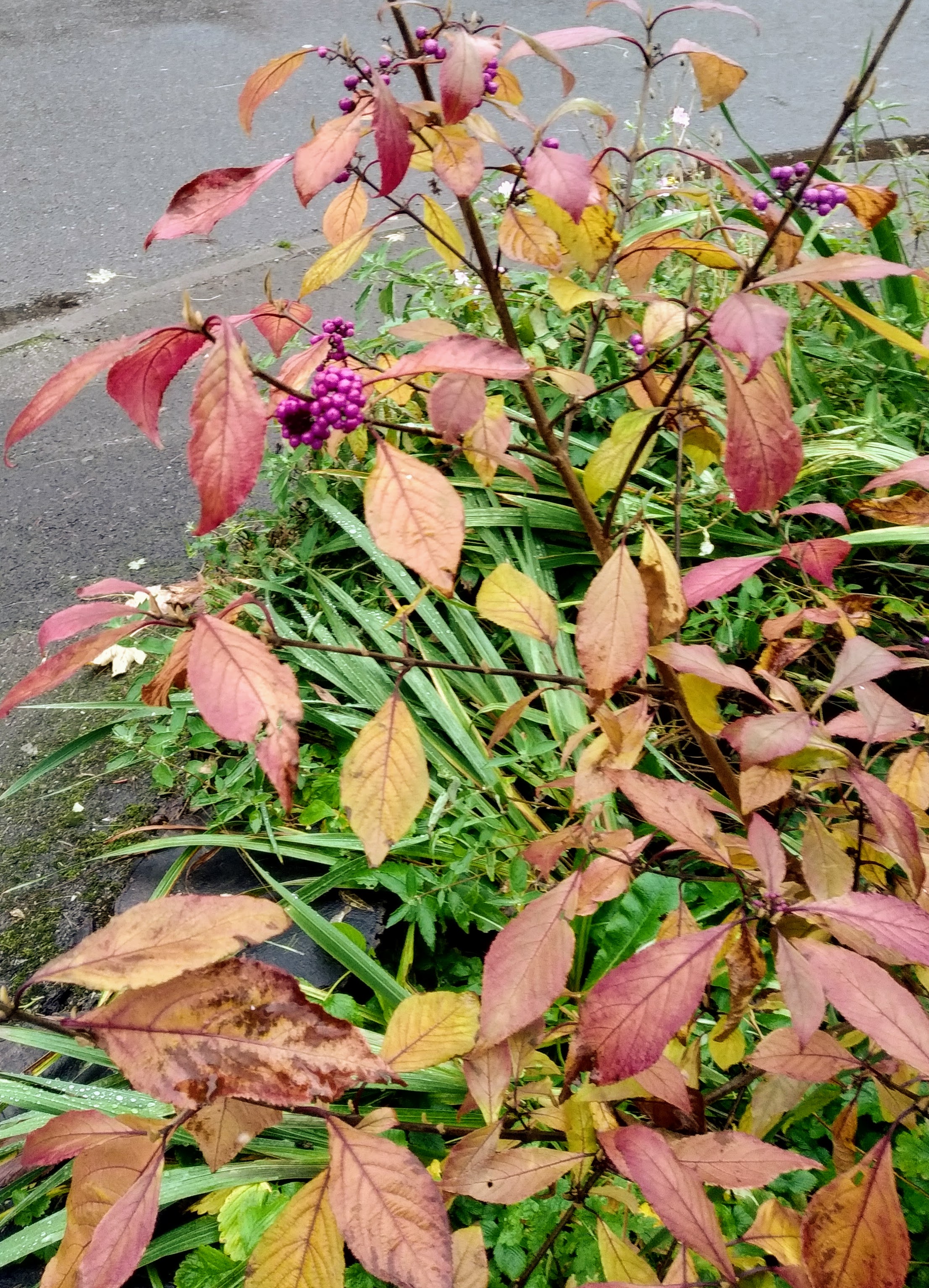|
Callicarpa Cathayana
''Callicarpa cathayana'' is a species of beautyberry. It is grown in gardens and parks as an ornamental plant for its decorative pink flowers and berries. The purple berries are a drupe In botany, a drupe (or stone fruit) is an indehiscent fruit in which an outer fleshy part (exocarp, or skin, and mesocarp, or flesh) surrounds a single shell (the ''pit'', ''stone'', or '' pyrena'') of hardened endocarp with a seed (''kernel'') .... They are not edible for humans. Birds eat the berries and disperse the seeds. The species are endangered in the wild. ''Callicarpa cathayana'' is native to China. External links * Callicarpa cathayana Picture' cathayana Endemic flora of China Plants described in 1951 {{Lamiaceae-stub ... [...More Info...] [...Related Items...] OR: [Wikipedia] [Google] [Baidu] |
Beautyberry
''Callicarpa'' (beautyberry) is a genus of shrubs and small trees in the family Lamiaceae.Heywood, V.H., Brummitt, R.K., Culham, A. & Seberg, O. 2007: Flowering Plant Families of the World. Royal Botanic Gardens, Kew. They are native to east and southeast Asia (where the majority of the species occur), Australia, Madagascar, southeast North America and South America. Growth The temperate species are deciduous, the tropical species evergreen. The leaves are simple, opposite, and 5–25 cm long. The flowers are in clusters, white to pinkish. The fruit is a berry, 2–5 mm diameter and pink to red-purple with a highly distinctive metallic lustre, are very conspicuous in clusters on the bare branches after the leaves fall. The berries last well into the winter or dry season and are an important survival food for birds and other animals, though they will not eat them until other sources are depleted. The berries are highly astringent but are made into wine and jelly. ... [...More Info...] [...Related Items...] OR: [Wikipedia] [Google] [Baidu] |
Drupe
In botany, a drupe (or stone fruit) is an indehiscent fruit in which an outer fleshy part (exocarp, or skin, and mesocarp, or flesh) surrounds a single shell (the ''pit'', ''stone'', or '' pyrena'') of hardened endocarp with a seed (''kernel'') inside. These fruits usually develop from a single carpel, and mostly from flowers with superior ovaries (polypyrenous drupes are exceptions). The definitive characteristic of a drupe is that the hard, lignified stone is derived from the ovary wall of the flower. In an aggregate fruit, which is composed of small, individual drupes (such as a raspberry), each individual is termed a drupelet, and may together form an aggregate fruit. Such fruits are often termed ''berries'', although botanists use a different definition of ''berry''. Other fleshy fruits may have a stony enclosure that comes from the seed coat surrounding the seed, but such fruits are not drupes. Flowering plants that produce drupes include coffee, jujube, mango, oli ... [...More Info...] [...Related Items...] OR: [Wikipedia] [Google] [Baidu] |
Callicarpa
''Callicarpa'' (beautyberry) is a genus of shrubs and small trees in the family Lamiaceae.Heywood, V.H., Brummitt, R.K., Culham, A. & Seberg, O. 2007: Flowering Plant Families of the World. Royal Botanic Gardens, Kew. They are native to east and southeast Asia (where the majority of the species occur), Australia, Madagascar, southeast North America and South America. Growth The temperate species are deciduous, the tropical species evergreen. The leaves are simple, opposite, and 5–25 cm long. The flowers are in clusters, white to pinkish. The fruit is a berry, 2–5 mm diameter and pink to red-purple with a highly distinctive metallic lustre, are very conspicuous in clusters on the bare branches after the leaves fall. The berries last well into the winter or dry season and are an important survival food for birds and other animals, though they will not eat them until other sources are depleted. The berries are highly astringent but are made into wine and jelly. ''Call ... [...More Info...] [...Related Items...] OR: [Wikipedia] [Google] [Baidu] |
Endemic Flora Of China
Endemism is the state of a species being found in a single defined geographic location, such as an island, state, nation, country or other defined zone; organisms that are indigenous to a place are not endemic to it if they are also found elsewhere. For example, the Cape sugarbird is found exclusively in southwestern South Africa and is therefore said to be ''endemic'' to that particular part of the world. An endemic species can be also be referred to as an ''endemism'' or in scientific literature as an ''endemite''. For example '' Cytisus aeolicus'' is an endemite of the Italian flora. '' Adzharia renschi'' was once believed to be an endemite of the Caucasus, but it was later discovered to be a non-indigenous species from South America belonging to a different genus. The extreme opposite of an endemic species is one with a cosmopolitan distribution, having a global or widespread range. A rare alternative term for a species that is endemic is "precinctive", which applies to s ... [...More Info...] [...Related Items...] OR: [Wikipedia] [Google] [Baidu] |

.jpg)